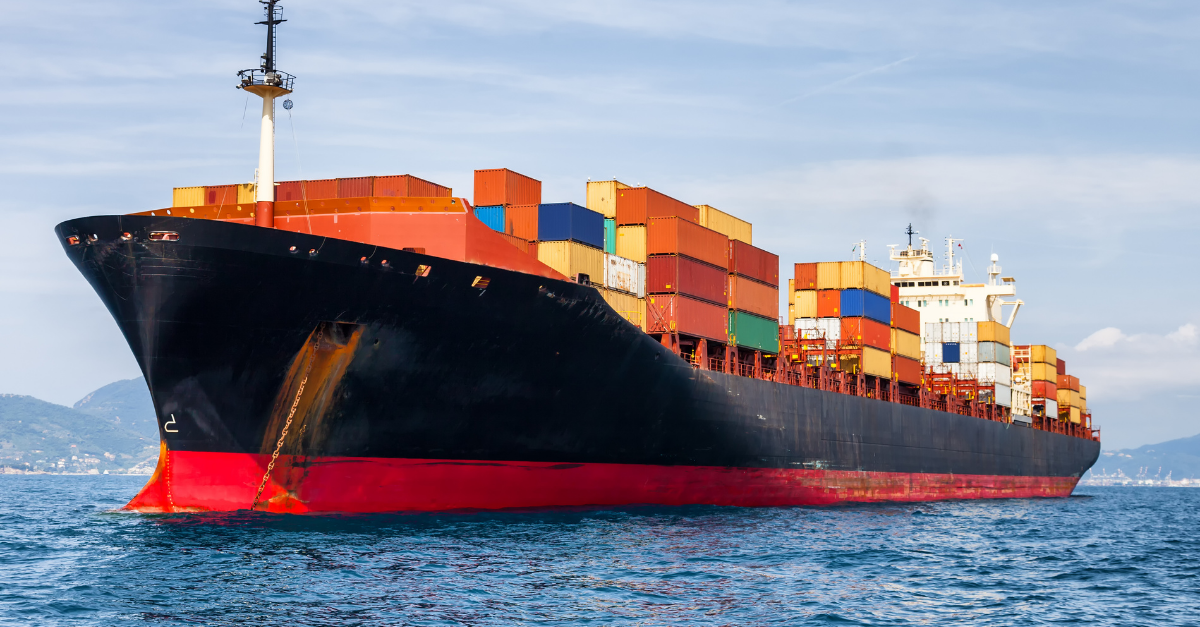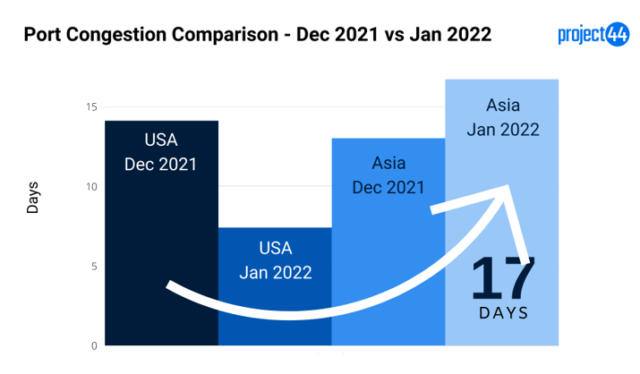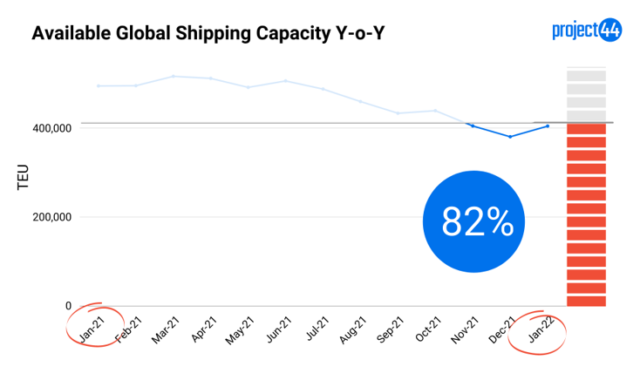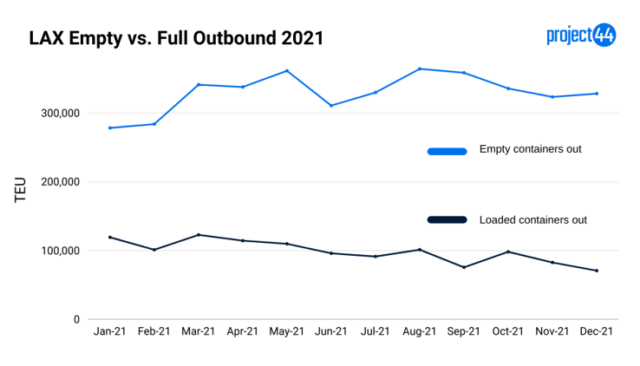
Port congestion in 2022 eases in the United States but shifts to Asia
Feb, 16, 2022 Posted by Gabriel MalheirosWeek 202207
The US West and East Coast ports saw a reduction in port congestion in 2022, as workers cleared a substantial backlog amid Covid-19 outbreaks, according to the supply chain visibility platform provider Project44.
Particularly, the number of days that ships were waiting to berth at US ports, on average, fell from 14.1 days in December to 7.4 days in January, setting the pace of port congestion in 2022, according to Project44 intelligence.
However, while there was some easement at US ports, including Los Angeles (POLA) and Long Beach (POLB), congestion shifted to Asian ports, which recorded an increase from 13 days to 16.7 days, on average, from December to January.
Among the Asian ports, Hong Kong recorded the most significant increase, from an average of 17.5 days in December to 22.5 days in January.
The 2022 port congestion increase in Asia has been attributed to new Covid-19 outbreaks in the continent and specifically in China, as well as to pre-Lunar New Year planning by carriers.
In Ningbo, for example, a cluster of Covid-19 cases in early January in the city’s Beilun district led to extensive trucker delays, as drivers had to undergo testing and quarantine before being allowed into Beilun’s three container terminals.
While data indicates that there has been a marginal decrease in the ship berth time in Los Angeles, the average time that a ship spends at berth in the Californian port is ten times more than it spends in Shanghai, indicating the considerable gap in port productivity at the busiest port of the United States.
Available shipping capacity is at 82% of the 2021-level
Although there was a slight increase in available shipping capacity from December 2021 to January 2022, it was still at around 82% of January 2021’s level, according to Project44 data.
While this slight increase from December to January proved beneficial for shippers needing to replenish inventories ahead of the Lunar New Year on 1 February, the increase was not enough for retailers facing low inventory levels and strong demand.
Container Dwell Times
According to Project44 intelligence, the import volumes into the US West Coast ports have been steadily declining since August of 2021. As a result of these declining volumes, the average import container dwell times dropped to 5.2 days and five days respectively in Long Beach and Los Angeles.
However, January export container dwell times for Los Angeles were much higher than import ones, while some carriers prioritized empties over full export containers.
Other carriers are “cycling” their discharges with one box off and one box on, but prioritization of imports is most important for many of these carriers.
Empty Container Movement
Many of the outbound containers are empty and are being sent back to Asian ports and manufacturers to reload and ship as full containers back to US ports to satisfy what has become consumers’ insatiable desire to spend on goods.
In December, the Port of Los Angeles announced a US$100 daily penalty on carriers that failed to clear empty containers off the docks as the empties were piling up.
However, in January, the port deferred the penalty because it may have “unintended consequences,” as some of the empty containers that have been sitting the longest may be buried under others, costing time “that our marine terminals simply don’t have to waste right now,” port executive director, Gene Seroka, said in an announcement.
At the end of January 2022, the port of LA was sitting with around 62,253 empty containers to be shipped out. The port shipped out 3.95 million empty containers in 2021 compared to 1.18 full containers, according to Project44 intelligence.
Transshipment Rollovers
Since October, transshipment rollovers have inched upwards for several reasons, including blank sailings, port congestion, Covid-19, and related labor issues.
But January’s overall rollover percentage of 52% was a bigger month-to-month increase than in recent months, 6% higher than in December, likely due to Asian port congestion.
While the ocean freight market will likely see a slight lull during February, it is expected that demand will pick up once again once manufacturing facilities reopen.
The potential for further port congestion is also likely in the coming month, according to Project44, as US retailers and other shippers replenish and increase safety inventories.
US retail inventories remain low, and many shippers did not have enough inventory on hand during the December holiday season to satisfy customer demand.
Source: container-news
To read the full original article, please visit:
https://container-news.com/port-congestion-eases-in-the-united-states-shifts-to-asia/
-
Economy
Jul, 08, 2019
0
EU-Mercosur agreement: Argentina benefits from beef exports
-
Ports and Terminals
Mar, 22, 2022
0
The leasing of new areas increase investment opportunities in the Port of Paranaguá
-
Other Cargo
Aug, 10, 2023
0
Global landscape impacts Brazil footwear exports
-
Ports and Terminals
Nov, 25, 2020
0
SP government presents modified plans for Santos-Guarujá bridge project





